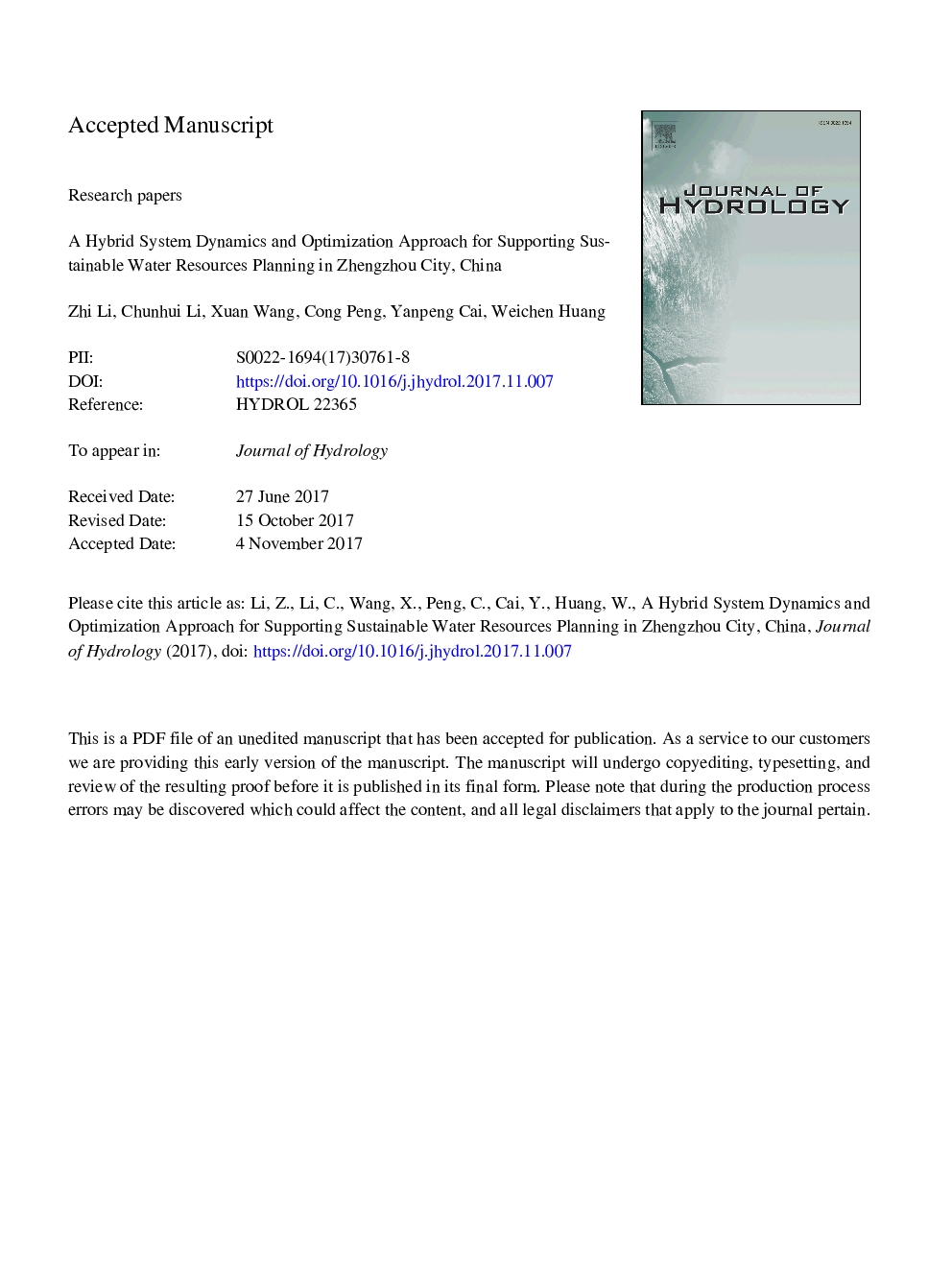| Article ID | Journal | Published Year | Pages | File Type |
|---|---|---|---|---|
| 8895099 | Journal of Hydrology | 2018 | 49 Pages |
Abstract
Problems with water resources restrict the sustainable development of a city with water shortages. Based on system dynamics (SD) theory, a model of sustainable utilization of water resources using the STELLA software has been established. This model consists of four subsystems: population system, economic system, water supply system and water demand system. The boundaries of the four subsystems are vague, but they are closely related and interdependent. The model is applied to Zhengzhou City, China, which has a serious water shortage. The difference between the water supply and demand is very prominent in Zhengzhou City. The model was verified with data from 2009 to 2013. The results show that water demand of Zhengzhou City will reach 2.57â¯billionâ¯m3 in 2020. A water resources optimization model is developed based on interval-parameter two-stage stochastic programming. The objective of the model is to allocate water resources to each water sector and make the lowest cost under the minimum water demand. Using the simulation results, decision makers can easily weigh the costs of the system, the water allocation objectives, and the system risk. The hybrid system dynamics method and optimization model is a rational try to support water resources management in many cities, particularly for cities with potential water shortage and it is solidly supported with previous studies and collected data.
Keywords
Related Topics
Physical Sciences and Engineering
Earth and Planetary Sciences
Earth-Surface Processes
Authors
Zhi Li, Chunhui Li, Xuan Wang, Cong Peng, Yanpeng Cai, Weichen Huang,
